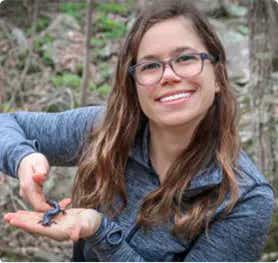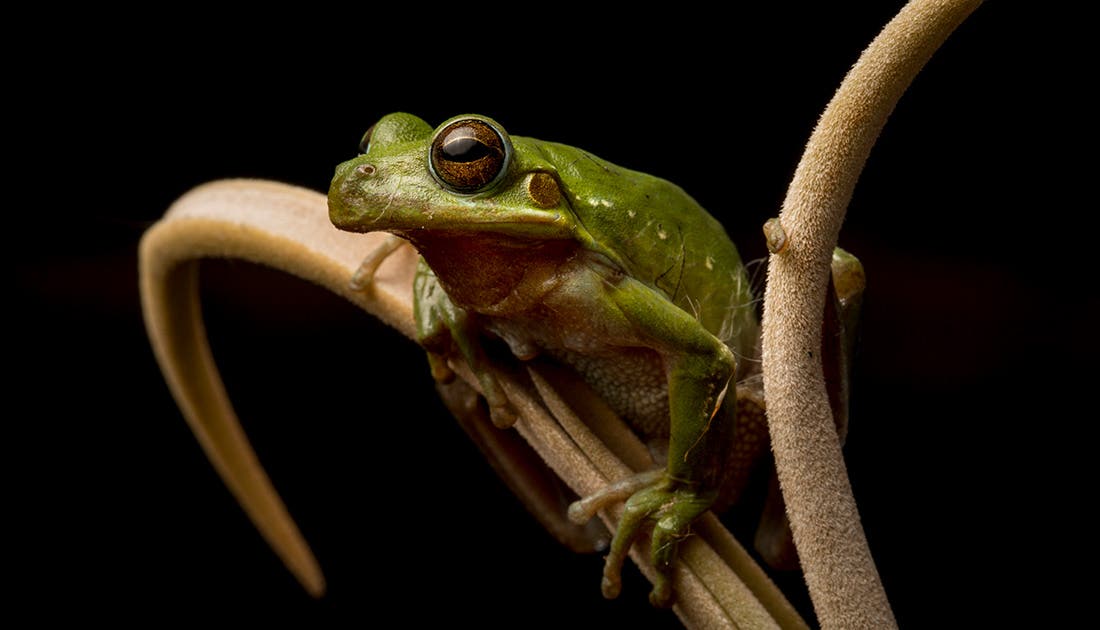If you’ve ever Googled a species to see if it’s Endangered, you’ve used data gathered by the IUCN Red List of Threatened Species. The Red List Partnership, a convening of 14 organizations, is the global authority on species extinction risk, yet it is vastly under-resourced, depending on thousands of volunteer experts to keep it up to date.
Given the severity of the extinction crisis, we can’t wait long periods of time to understand how close to extinction a species might be; we need to know how species are doing now. Could machine learning help prioritize which species are in most urgent need of an extinction risk assessment? With the development of a new “species priority index,” published today in Conservation Biology, we’ve taken an important step in that direction.
Why the Red List is important — and why improvements are critical
Since its creation in 1964, the Red List of Threatened Species has been integral to biodiversity conservation. Scientists use it to understand which threats are driving species toward extinction and the actions needed to protect and recover them. The private sector uses it to reduce companies’ impact on biodiversity. Governments use the Red List Index to measure their progress in achieving global biodiversity targets, such as those adopted through the Convention on Biological Diversity’s Kunming-Montreal Global Biodiversity Framework.
So far, this “barometer of life” has assessed about 160,000 species, aiming to evaluate a cross-section of all animals, plants, and fungi to give us a general indication of the status of biodiversity across the world. But given the pace of the extinction crisis, in which species are vanishing hundreds or thousands of times faster than natural extinction rates, and an estimated total number of species of more than 8 million, it’s basically a race against the clock, which means we need to be as efficient as possible.
Keeping Red List data up to date is a monumental task, particularly with limited time and money. Thousands of experts across the globe volunteer their time outside their day jobs to keep the Red List records up to date, and we just can’t keep up at the ideal pace, despite our best efforts. Unfortunately, 26% of Red List assessments are currently out of date — alarming when you consider that these are the best data available worldwide.
This lag is limiting the Red List’s ability to inform conservation efforts. For example, last year we published the second Global Amphibian Assessment, the latest comprehensive look at the conservation status of all known amphibian species. We found that 41% of amphibians are threatened with extinction, making them the most threatened major group of vertebrates in the world. Amphibians are experiencing rapid environmental change, as climate change shrinks their habitats and the devastating invasive chytrid fungus continues to spread to new areas. Yet every year we are discovering about 150 amphibian species that are new to science. Unless we can keep our finger on the pulse and quickly detect when a species’ situation on the ground has changed, a species might go extinct before we realize it — or even before we know it’s there at all.
How the priority index works and what we can learn
The priority index came about because several researchers who focus on modeling and machine learning wanted to apply these skills to conservation work. When fellow Red List practitioners and I were invited to collaborate, we jumped at the opportunity. We decided to initially focus this study on amphibians, given the severe threats they face and the high number of species (more than 8,000) already on the Red List.
Here’s how it works: Instead of using traditional methods for assessments, we used automatic assessments calculated by computers. We considered various biological and environmental factors, such as species traits, climate and land-use change to predict which species are most likely to change Red List categories. Although automatic assessments are not as precise as traditional ones, they enable us to determine extinction risk relatively quickly with few resources, while incorporating more recent data (such as satellite imagery of forest loss) or previously unknown datasets to paint a fuller picture of risks to species.
From there, we applied an index of reassessment priority to all species, which spotlights certain species requiring immediate attention because the predicted Red List categories do not match with the actual Red List categories. For example, a frog species found only in one mountain chain in southeastern Brazil was previously listed as Near Threatened; the priority index indicated a mismatch, which allowed us to identify an error in the listing caused by an inappropriate use of the IUCN criteria. As a result, the species has since been reassessed as Endangered.
For amphibians and other taxa, this tool could help quickly prioritize reassessing and then ramping up conservation actions for the species that are declining the fastest. The index has confirmed that certain variables are associated with higher extinction risk. For amphibians, size of a species’ range is important; most have small ranges — sometimes only a single mountain top — which makes them especially vulnerable. Human pressure, such as how close a species lives to cities and other human infrastructure, is also a strong predictor of extinction risk.
Climate change is another increasingly important driver of extinction. Most amphibians require water to breed, and as many of their habitats are becoming drier, their populations decline. Meanwhile, in places like the Caribbean, we are seeing storms that are more frequent, longer, and more intense. If an occasional hurricane destroys the forest and wipes out the frogs, populations can usually rebound. But as places are increasingly being pummeled by these storms, the ability of populations to recover diminishes.
More collaboration is needed
The priority index is a great example of how academic researchers, Red List assessors, and species experts can join forces to automate certain labor-intensive processes and therefore aid conservation efforts. However, it’s just the first step, and future improvements and further collaboration are critical for this to be as useful as possible.
For example, our study only considered the effects of climate change over the past several decades, not projections of future changes, which is essential to identify species that either haven't yet experienced climate-related declines but are predicted to do so, or those that will continue to experience declines due to compounded effects. We also weren’t able to incorporate invasive species or disease at this stage; given that the chytrid fungus has been one of the biggest drivers of amphibian declines in recent decades, this limits the priority index’s usefulness in identifying priorities for reassessment.
The priority index highlighted many mismatches where a species was found to be less threatened than its actual Red List category, but in many of those cases, the experts on those species knew the reality on the ground better. Despite such limitations, the species priority index is an exciting new development that can complement and expedite the traditional assessment process by flagging species most in need of reassessment or detecting inconsistencies in assessments among species with similar traits and conditions.
Tools like this cannot be developed in a vacuum; their effectiveness requires not just more involvement of conservation practitioners from the beginning, but improved collaboration among many different players. In bridging the research-implementation gap, we need to get more types of experts involved, like software developers and AI experts, to create accessible and powerful platforms that will drastically change the way we collect Red List data and keep the Red List up to date.
Those of us who dedicate our time to the Red List can’t tackle the extinction crisis on our own. We need the brain power and innovation of those outside of the conservation community to help us solve this global challenge. The use of new tools and technology can aid in species’ recovery, which we know works. We must scale up species conservation to stem the tide and recover ecosystems which are critical for biodiversity, climate, and people.

Kelsey Neam
Species Priorities and Metrics Coordinator
As Re:wild’s Species Priorities and Metrics Coordinator, Kelsey is fiercely committed to turning data into meaningful and impactful conservation action. Guided by a deep passion for conserving the planet’s biodiversity, Kelsey is at the forefront of efforts to prioritize and measure the impact of Re:wild’s species conservation work.



